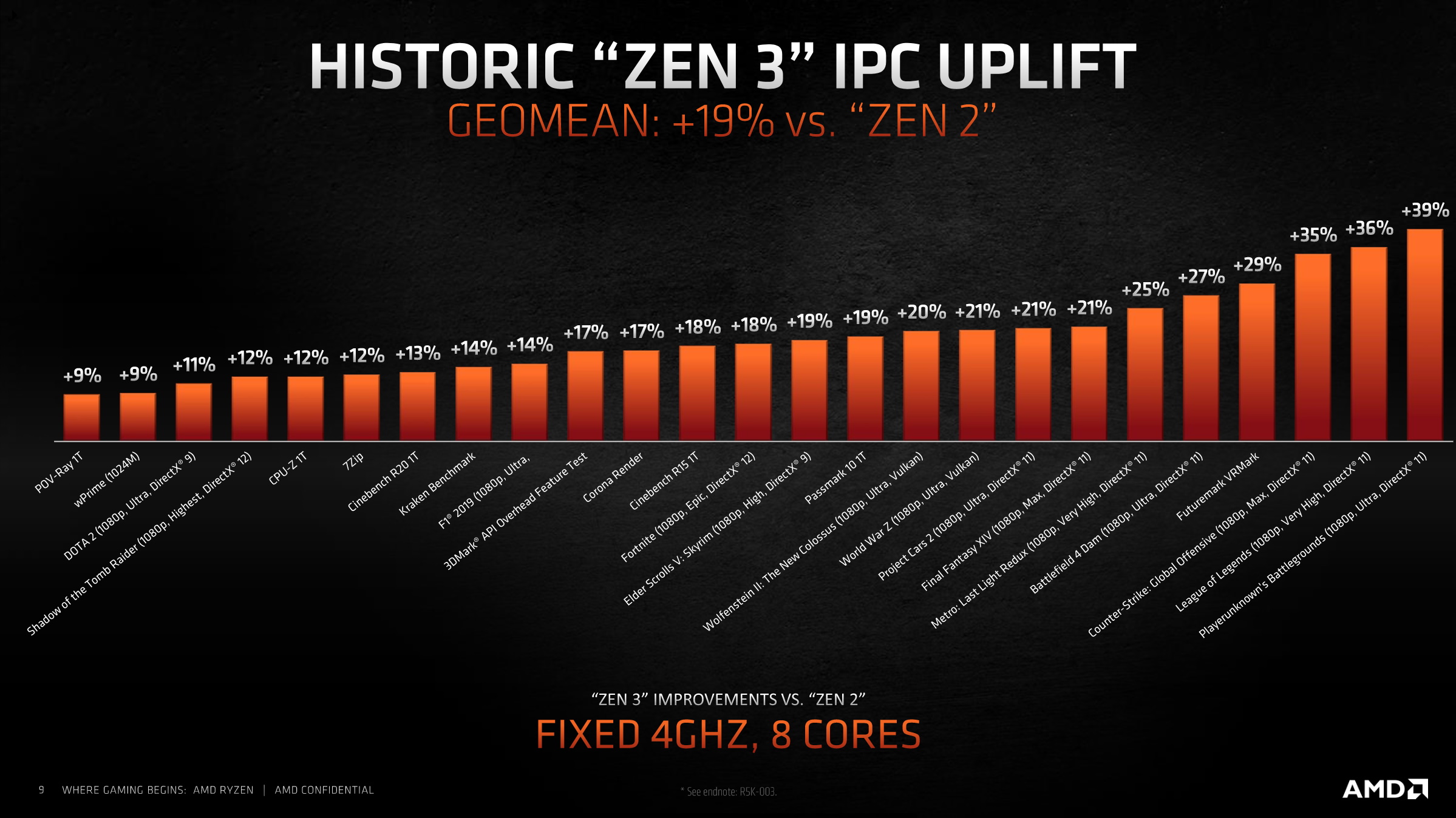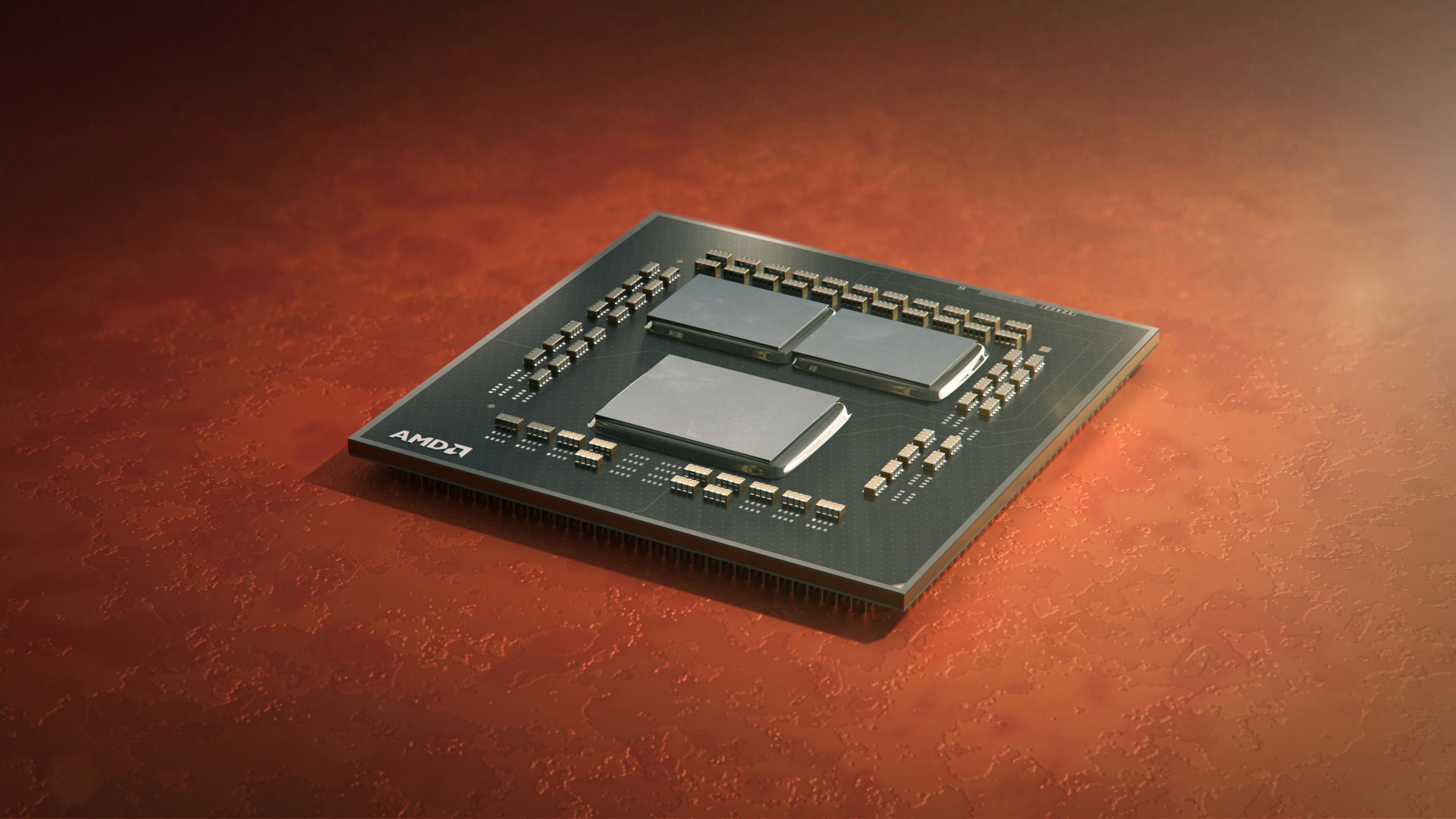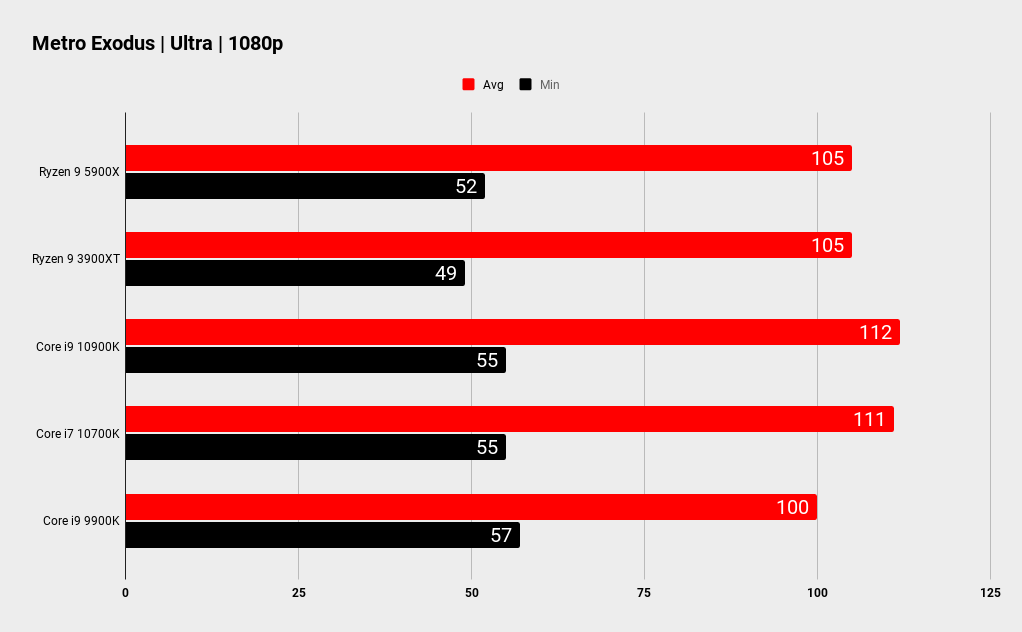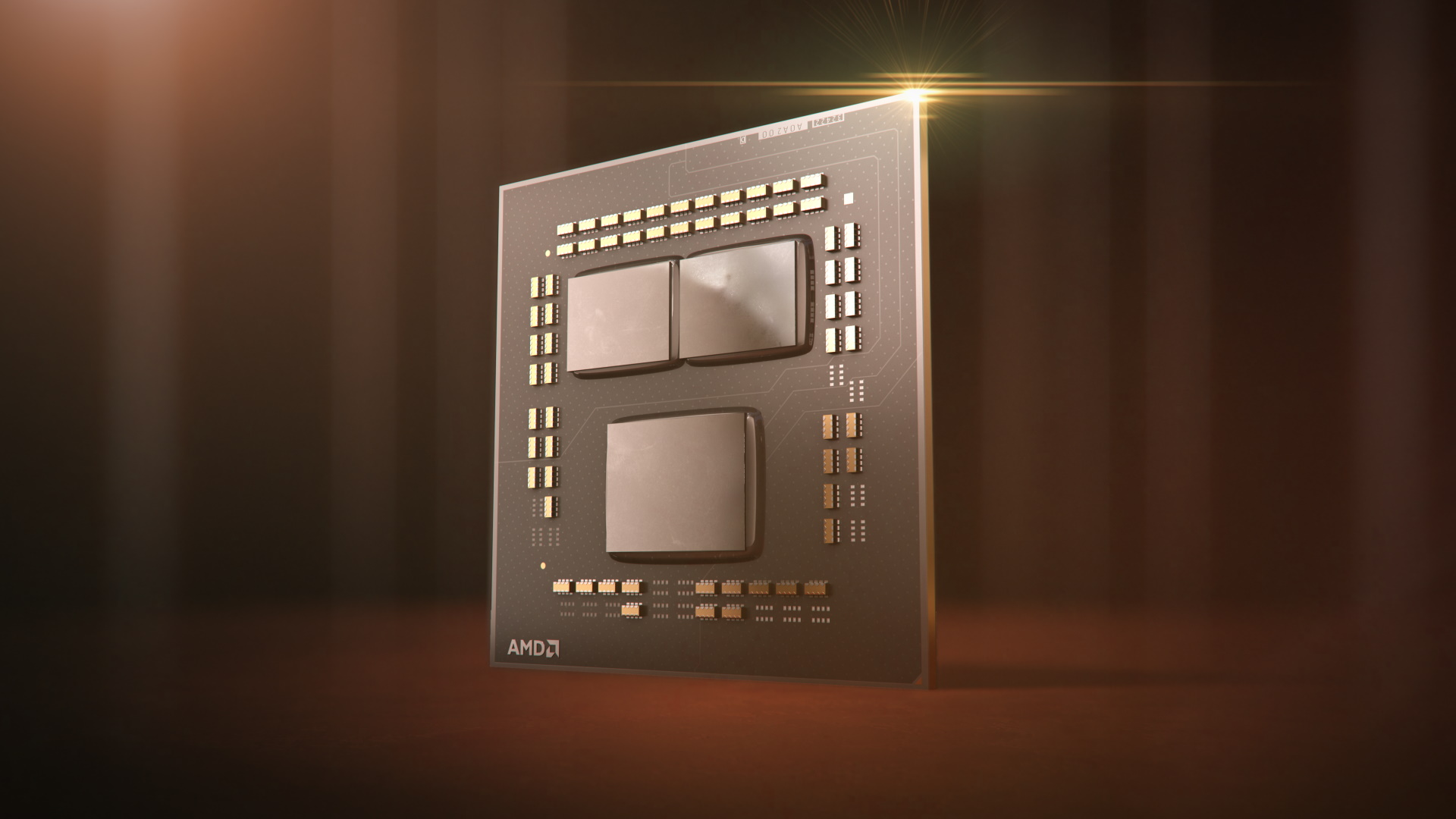Our Verdict
The Ryzen 9 5900X is a phenomenal processor that is as good in serious apps as it is games, no other 'mainstream' chip really comes close.
For
- Awesome performance throughout
- Fast and efficient architecture
- PCIe 4.0 support
Against
- Rarely need so many threads
- Expensive, and no cooler as standard
PC Gamer's got your back
Let's cut straight to the chase: the performance of the Ryzen 9 5900X and AMD's latest Zen 3 architecture is good. It's really very, very good. It pretty much delivers on the promise that AMD laid out at the chip reveal on October 8, and if nothing else that should make for very worrying reading for Intel. For us gamers that is nothing but good news, because there is now real choice when it comes to the best CPU for gaming for your next build.
It isn't a one horse race anymore.
Intel has managed to stay competitive through AMD's successive performance improvements to Zen thanks to its dominance in gaming. While AMD was making everything else to do with computing a miserable story for Intel to digest, it still had that one flag to cling to. That has now gone. While Zen 3 doesn't dominate Intel in gaming quite in the way that AMD optimistically hoped it might, there is now basically nothing between the two. The fact that this chip can do lots of other processor-intensive tasks and game just as well as Intel's finest means Intel isn't really an option for anyone wanting serious performance.
AMD is no longer the underdog, and it shows.
There are caveats though. There always are. That performance doesn't come cheap. AMD is no longer the underdog, and it shows. This Ryzen 9 5900X will set you back a cool $549. That's on a par with Intel's top chip, the Core i9 10900K (Which launched at $499, but has seen its price drift upwards since). And while we'll be quick to point out that this has more cores than Intel's 10-core offering, and that yes this performs much better in serious workloads, there's no getting away from the fact that this is an expensive chip.
This isn't the whole story though, and there's a lot more to AMD's latest microarchitecture than these opening statements. So without further ado, let's dive into AMD's greatest architecture so far.
Zen 3 architecture
On paper AMD's Zen 3 architecture looks like a fairly straightforward evolution of Zen 2, but AMD is keen to point out that something a little more radical has taken place, that Zen 3 is actually a complete ground-up redesign. When you factor in the performance improvements it offers that does actually make more sense. AMD is claiming a 19 percent IPC improvement over Zen 2, which isn't the sort of boost that comes easily—you need only look at Intel's modest improvements over its last few generations for proof of this.
These improvements to the Zen microarchitecture haven't been derived from a new process node either—the Ryzen 5000 chips use the exact same production process as the XT chips that were released this summer, the 3900XT, 3800XT and 3600XT. These new AMD Ryzen 5000 processors are still using TSMC's 7nm node. This isn't that much different from the production process used for the initial Zen 2 chips, other than optimizations that have been made by AMD and TSMC to get the most from the process. So no, Zen 3 doesn't use TSMC's further-improved 7nm+ production process.

The most fundamental change Zen 3 does offer over Zen 2 is in how the cores are configured. Zen 2 has up to four cores per core complex (CCX), so that each four-core cluster has access to 16MB of L3 cache. If a core from one cluster wants to access the L3 cache from another cluster it has to communicate with that cluster through the I/O die using the Infinity Fabric. Which is much slower than accessing that local L3 cache.
In Zen 3, AMD has moved to an eight-core design instead. Now all eight cores can access 32MB of L3 cache directly, and don't need to go through the I/O die to do so. This also means that core-to-core access is much quicker as well, and will mean there are situations where this change alone can offer significant performance improvements. There may still be times in dual chiplet CPUs where one cluster wants to access the L3 cache, or communicate with the cores of another cluster, and it can absolutely do that via the Infinity Fabric, but this shouldn't happen anywhere near as often in normal usage.
All of this is important for us because games often rely very heavily on speedy cache and lightning memory access, so more cores having access to a larger block of L3 cache can see an uptick in performance all on its own. While, on the face of things, the move from a pair of four-core CCXs with 16MB of L3 cache apiece to a single eight-core CCX with 32MB of L3 cache may not seem like much of an improvement on its own, it's actually incredibly important in terms of gaming.
This change also means that AMD can now produce CPUs with up to eight cores using only a single CCX and the accompanying I/O die—this is exactly how the Ryzen 7 5800X is configured. Meanwhile the top of the stack, the Ryzen 9 5950X, which is a 16-core, 32-thread CPU, has two eight-core chiplets alongside that same I/O die. The likes of the Ryzen 9 5900X meanwhile has a pair of chiplets each with six active cores. It's a versatile design, and helps AMD make the most out of the working chiplets it has at its disposal. As we saw with Zen 2, this approach helps AMD save significant cost per processor.

Back to that 19 percent IPC improvement claim, this reworking of how the cores are laid out isn't the only factor in the improved performance on offer from Zen 3. The building blocks of how the CPUs actually work have been upgraded too. The processor front-end boasts faster fetching thanks to a doubling of the L1 buffer size, there's increased bandwidth for handling branch predictions, and faster recovery for mispredictions.
The execution engines have seen an overhaul as well, boasting reduced latency and more silicon to get work done. There's also increased load/store bandwidth for handling larger structures, which basically means code is handled more efficiently and completed quicker.
In case it isn't clear, these IPC improvements are important because a lot of PC games still love CPUs which prioritise the ability to handle a lot of instructions per clock over core count. Intel's combination of high IPC and high clockspeeds has given it the edge in gaming for years now, but that dominance could well be over. In fact AMD has managed to improve its IPC so much now that it can offer comparable performance to Intel, and is able to do so at lower clock speeds.
Intel can still hit higher clock speeds than AMD, but AMD now has the more efficient architecture. Part of the reason for this is because AMD is sticking with the 142W power envelope defined by the AM4 platform. Given the increase in the IPC, this has allowed AMD to reduce the base clock by 100MHz across its Ryzen 5000 CPUs compared to the previous generation. Don't worry though, this also means it has increased the boost clock, so the core, or cores, that need to run at higher frequencies can do so.

It's also worth noting where AMD got its 19 percent IPC improvement figure from. It's actually from averaging out performance gains across multiple benchmarks while running comparable 8-core chips at the same 4GHz frequency. If you focus just on gaming though, AMD says you're looking at a 26 percent improvement going from a Ryzen 9 3900X to the new Ryzen 9 5900X, with the likes of PlayerUnknown's Battlegrounds seeing as much as a 50% improvement.
AMD has used the same 12nm I/O die produced by GlobalFoundries for these new chips, which makes sense as there is little change when connected to the rest of the system. The Infinity Fabric potentially supports a higher clock speed of up to 2,000MHz now as well, which when coupled with DDR4-4000 represents the new sweet spot for memory performance.
The official specification for memory support is still DDR4-3200, although we had no problems running the new chips with DDR4-3600 and DDR4-4000 RAM. It's worth noting AMD is still working on getting the Infinity Fabric running flawlessly at 1,900MHz and 2,000MHz across all platforms though—it won't be available at launch.
Finally, it's worth reiterating that Ryzen 5000 CPUs are backwards compatible with 400- and 500-series motherboards. Those older B450s and X470s won't be getting the necessary BIOS updates until January at the earliest though, and that's for the first beta BIOSes too. Realistically those rocking older motherboards have a bit of wait on their hands for full Ryzen 5000 compatibility—you're probably looking at February or March at the earliest. If you're looking to build a new system around these new chips, then you want to focus on a motherboard using the A520, B550 or X570 motherboard chipsets.

Ryzen 9 5900X specs
As for the specifics of the Ryzen 9 5900X, this is AMD's high-end mainstream chip, which means it's kitted out as such. It's not the halo product, that accolade goes to the 16-core, 32-thread Ryzen 9 5950X (which we'll be looking at shortly), but this is still an impressive bundle of silicon, boasting 12 cores and 24 threads with a base clock of 3.7GHz and a potential boost clock of 4.8GHz. It lays claim to 64MB of L3 cache, support for PCIe 4.0, and has the same 105W TDP as its predecessor. Unlike the original 3900X though, it doesn't come with a cooler.
Cores - 12
Threads - 24
Lithography - TSMC 7nm
Base clock - 3.7GHz
Boost clock - 4.8GHz
L3 Cache - 64MB
Memory support - DDR4 3200MHz
Socket - AM4
TDP - 105W
Cooler - None
Launch price - $549 |£549 | AU$859
That core and thread count matches the 3900X that was released just over a year ago, and at the time it was fair to say that while that configuration was great for more serious applications, games weren't in a position to make the most of so many threads. This is still absolutely the case today, and anything above an 8-core, 16-thread configuration is still overkill for today's gaming. This is a chip that is designed for more serious work, but will also handle your gaming needs, but we'll come back to that shortly.
The frequencies you actually see in use depend a lot on the application you are using and where the power is needed most. If you use a thread heavy application like 3D rendering, then you can see all the cores being used at the same rate, in which case they'll sit fairly comfortably at 4.2GHz. As for single-threaded applications, the theory goes that they should top out one core at 4.8GHz, although in testing I often saw cores maxing out above that, as much as 4.95GHz.
To understand what's happening here, it's briefly worth going over Precision Boost 2, which is what AMD has used since the launch of its Ryzen 2000 chips to boost frequencies on the fly. This isn't overclocking, and it isn't something you can opt out of, rather it's a system for raising clock speed when there is headroom to do so, to ensure the chips offer the best performance on the fly. This isn't pre-set either, and instead allows the chips to adapt dynamically to the workloads. There are various activity monitors the chip keeps an eye on to make sure it can make these boosts, and it can make adjustments in milliseconds.
An important part of this is the fact that Ryzen 5000 chips are aggressive when it comes to using sleep states in order to keep power usage down. So any cores that aren't being actively used are not downclocked, or undervolted, instead they are essentially turned off. They draw no power and produce no heat because of this. That means that the active cores have more power and thermal room to work with, which equates to higher clock speeds where it counts.
This is a positive thing to report, because with Zen 2 it was often hard to see the top boost clock hit at all. The fact that we saw the 5900X surpass the maximum boost clock on more than one occasion means that AMD isn't overmarketing these new chips either, you should see those boost clocks hit fairly regularly too.

Ryzen 9 5900X performance
Now the important bit: performance. A processor can have the cleverest architecture around, but unless it delivers, what's the point? Well, luckily for AMD and us the potential buyers of the Ryzen 9 5900X, it absolutely delivers. Whether you're looking at serious number crunching for video encoding and 3D rendering or for gaming, the Ryzen 9 5900X absolutely delivers. This thing is a beast.



CPU - AMD Ryzen 9 5900X
Cooler - Zadak Spark AIO
Motherboard - Gigabyte X570 Aorus Master
Memory - 16GB Thermaltake DDR4 @3,600MHz
GPU - Nvidia RTX 2080 Ti
Storage - 2TB Sabrent Rocket PCIe 4.0
PSU - Ikonik Vulcan 1200W
Cinebench R20 is a great benchmark for assessing the raw processing power of a chip and it loves as many high performance threads as you can throw at it. Compared to the last-gen 3900XT, the 5900X represents a significant step up in multithreaded performance by 16 percent, while the single-core performance also sees a notable boost of 20 percent.
I've included the 16-core, 32-thread 3950X for comparison, and the new chip is almost as fast. As for Intel's 10-core, 24-thread 10900K, it doesn't really stand a chance, with AMD's latest chip clocking in a cool 30 percent faster.
It's a similar story when you look at video encoding as well, with the X264 v5.0 benchmarking recording an impressive 75 frames per second against the 10900K's 52. That's a 45 percent lead for AMD's latest chip. And this time we also see the 5900X outperform the 3950X, not by much, but enough to make you realise how much of a heavyweight this chip is.
As far as temperatures and power draw goes, there's nothing alarming to report here. As already mentioned AMD has stuck to the 142W socket power, and that's what we saw under heavy lead. When idling, where cores are turned off and not a lot is really happening this drops to 25W, which is pretty impressive. The maximum temperature peaked at 81°C, which is comparable with the 3900XT.







As far as the games are concerned, there are a few takeaways here. The first is that the overall performance has shot up in some titles—just look at the F1 2019 score for proof of that. Compared to the 3900X you're looking at a 20 percent increase in performance. Far more important than the improvements over the last generation though is the fact that there's now effectively nothing between the 5900X and Intel's top Core i9 10900K.
Not every game sees parity, with Assassin's Creed Odyssey at 1440p showing something of a worst case scenario where Intel still has a 7fps lead. Elsewhere the scores are much closer, and the 5900X manages to outperform Intel's finest in Total War: Three Kingdoms at 1080p. And if you're looking to game at 4K any difference between Intel and AMD is effectively wiped out, with frame rates within the margin of error.
If you're in the market for a processor and you're predominantly a gamer, then there's essentially nothing between either of them anymore. AMD may not have quite managed the dominance it was promising at the launch, at least not in our testing, but there's so little between these chips now that any idea of buying one over the other for better gaming performance is absolutely moot. Sure there may be the odd game that performs slightly better on one platform than the other, but essentially they're the same now.

Ryzen 9 5900X overclocking
Overclocking AMD's chips has felt like a singularly pointless exercise for a few generations now, and Zen 3 doesn't really change that. Don't get me wrong, you can overclock it, and you can see an uplift in multi-core performance, but this will be at the detriment to single-core performance, which means that overall it often isn't worth it, particularly as some games will perform worse when overclocked, even if a few show a subtly improvement. Essentially the takeaway is that AMD is better at eking out the performance on offer than you are, and the quicker you realise that the better really.
AMD is better at eking out the performance on offer than you are.
That said, we can't help but chase the performance dragon, and dabbled with a little BIOS and Ryzen Master overclocking to see what was possible. The most basic form, Precision Boost Overdrive, produced a subtle uplift in Cinebench R20, where it pushed the clocks to 4,374MHz to garner an overall score of 8,553 (at stock the chip managed 8,348). Auto overclocking didn't offer much of an improvement over this, and we don't really see much benefit to using it.
Manual overclocking to 4.6GHz at 1.3V produced the biggest uplift in Cinebench R20, with a score of 9,062, which is even faster than 16-core, 32-thread 3950X manages. Just let that sink in a second: the improvements AMD has made to this chip make up for a difference of four cores compared to the previous generation. That's pretty impressive. Unfortunately the single core performance still suffers under this overclocking regime, and the performance dropped by seven percent to 594.
Perhaps per CCX or per core overclocking will change this after the fact. But, for now, it just isn't worth overclocking these chips.

Ryzen 9 5900X verdict
Which leaves one final question: should you buy the Ryzen 9 5900X? And the answer, as is often the case, is: it depends. Had AMD rolled this chip out at the same price point as the 3900X's $499, it would have been the easiest yes I've ever uttered. That extra $50 does give pause for thought though, especially when you factor in that you've got to buy a decent aftermarket cooler as well. It's a great chip, but it's costly.
It very much feels like this is a chip that was built to last though. Support for PCIe 4.0 is a definite tick for AMD's chips, and while we may have had such support since the release of Zen 2, it doesn't lessen its impact. Given the push for speedy SSDs, pairing this chip with some serious storage should see you right as we move into a world that begins to make the most of the storage technology available. And actually this is reason enough for AMD's chips to pull ahead of Intel's PCIe 3.0 supporting behemoths.
If I were building a high-end PC right now, would this be the CPU of choice? Yes, it probably would. This alongside an Nvidia GeForce RTX 3080 makes for a formidable core that can handle 4K easily, and also turn its hand to more productive tasks without really breaking sweat. It'll surely play nice with the upcoming RX 6000-series GPUs, too. Throw in a quality next-gen SSD, a decent motherboard and some quality RAM and you've got a build that will easily outlive the PS5 and the Xbox Series X. Obviously it'll cost a lot more, but it can do so much more as well.
The key factor in this is that AMD has wrestled the gaming performance crown off Intel. And even if it isn't quite a knockout, more a win by points if we stick with that metaphor, it doesn't diminish the fact that the last cry of Intel diehards has now vaporised. It doesn't matter if you side with Intel or AMD when it comes to gaming, they're both just as capable. And given the overall package from AMD, that makes this the better chip.
The Ryzen 9 5900X is a phenomenal processor that is as good in serious apps as it is games, no other 'mainstream' chip really comes close.
Alan has been writing about PC tech since before 3D graphics cards existed, and still vividly recalls having to fight with MS-DOS just to get games to load. He fondly remembers the killer combo of a Matrox Millenium and 3dfx Voodoo, and seeing Lara Croft in 3D for the first time. He's very glad hardware has advanced as much as it has though, and is particularly happy when putting the latest M.2 NVMe SSDs, AMD processors, and laptops through their paces. He has a long-lasting Magic: The Gathering obsession but limits this to MTG Arena these days.



